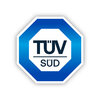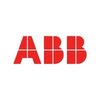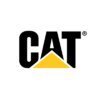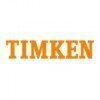Filter interviews by
TechnipFMC L2 Engineer Interview Questions and Answers for Experienced
TechnipFMC L2 Engineer Interview Experiences for Experienced
3 interviews found
I appeared for an interview before Mar 2024.
(1 Question)
- Q1. About previous experiences and ability to relocate
(1 Question)
- Q1. Asked about basic fundamentals of hydrodynamics.
(1 Question)
- Q1. About CTC and other details
I applied via Naukri.com and was interviewed in May 2021. There were 3 interview rounds.
Interview Questionnaire
4 Questions
- Q1. What is your role in your previous organization?
- Q2. Describe some of the challenges faced on your existing projects?
- Q3. Elaborate your projects?
- Q4. Technical questions. For eg : SFD, BMD, thin and thick cylinder, bolt calculation, GD&T
Interview Preparation Tips
I applied via Recruitment Consultant and was interviewed in Oct 2018. There were 5 interview rounds.
Interview Questionnaire
10 Questions
- Q1. 1. Tell me about your self
- Ans.
I am a dedicated and experienced engineer with a strong background in project management and problem-solving.
Experienced in project management and problem-solving
Strong background in engineering
Dedicated and detail-oriented
Excellent communication skills
Team player
- Q2. 2. What is your future goals.
- Q3. 3. Why you want to join TechnipFMC
- Q4. 1. What is your work in current company?
- Ans.
I am responsible for designing and implementing new features for our software products.
Designing and implementing new features for software products
Collaborating with team members to ensure successful project completion
Testing and debugging code to ensure quality and functionality
Participating in code reviews and providing feedback to peers
- Q5. 2. Do you know about MRB (Manufacturing record book)?
- Ans.
Yes, MRB (Manufacturing Record Book) is a document that contains detailed information about the manufacturing process.
MRB is a comprehensive record of all activities related to manufacturing, including design, production, testing, and quality control.
It serves as a reference for future production runs and helps ensure consistency and quality.
MRB typically includes information such as engineering drawings, specification...
- Q6. 3. Do you know about QAP/ITP?
- Ans.
Yes, QAP/ITP stands for Quality Assurance Plan/Inspection and Test Plan.
QAP/ITP is a document that outlines the quality assurance and inspection procedures for a project or product.
It includes details about the tests to be conducted, acceptance criteria, and responsibilities of different stakeholders.
QAP/ITP ensures that the project or product meets the required quality standards and specifications.
For example, in cons...
- Q7. 4. What is difference between radiography testing (RT) and ultrasonic testing (UT)
- Ans.
Radiography testing (RT) and ultrasonic testing (UT) are both non-destructive testing methods used to detect flaws in materials.
Radiography testing uses X-rays or gamma rays to create an image of the internal structure of an object, while ultrasonic testing uses high-frequency sound waves.
RT is typically used for thicker materials and can detect both surface and subsurface defects, while UT is more commonly used for th...
- Q8. 5. Is RT can replace with UT examination ?
- Ans.
No, RT cannot replace UT examination.
RT (Radiographic Testing) and UT (Ultrasonic Testing) are two different non-destructive testing methods used in engineering.
RT uses X-rays or gamma rays to inspect the internal structure of an object, while UT uses sound waves to detect flaws or measure thickness.
Each method has its own advantages and limitations, and they are often used in combination to ensure comprehensive inspec...
- Q9. 6. What is WPS & PQR?
- Ans.
WPS stands for Welding Procedure Specification and PQR stands for Procedure Qualification Record.
WPS is a document that provides detailed instructions on how to perform a specific welding procedure.
It includes information on welding parameters, materials, pre-weld and post-weld treatments, etc.
PQR is a record that documents the actual results of a welding procedure qualification test.
It includes details of the test, su...
- Q10. 7. What is essential variables and non-essential variables ?
- Ans.
Essential variables are crucial for the functioning of a system, while non-essential variables are not necessary but may provide additional information.
Essential variables are required for the system to operate correctly.
Non-essential variables are not necessary for the system's basic functionality.
Essential variables are typically directly related to the core purpose of the system.
Non-essential variables may provide s...
Interview Preparation Tips
Experience: My resume was shortlisted because i have mentioned projects details (including TechnipFMC projects) in resume which i had executed in previous company.
Job description not completely matched with my resume but it was 60% matched.
General Tips: I had faced three round of interview which had described above. HR asked general question (mentioned above).
Technical round interview questions are based on my role and responsibilities in current company.
Skills: NDE level II, Welding Skill, Quality documentation., Communication, Analytical Skills, Presentation Skills, Decision Making Skills
Duration: 1-4 weeks
Skills evaluated in this interview
Top trending discussions






Interview questions from similar companies

I applied via Recruitment Consultant and was interviewed in Mar 2020. There were 3 interview rounds.
Interview Questionnaire
2 Questions
- Q1. Questions will be related to the post which company is offering.
- Q2. Should be very accurate to all electronics queries
Interview Preparation Tips

I applied via Recruitment Consultant and was interviewed in Mar 2020. There were 4 interview rounds.
Interview Questionnaire
1 Question
- Q1. Questions were related to the post John Deere were offering to candidates. For me it was Diagnostics Author position.
Interview Preparation Tips
If you don't know the answer don't try to attempt simply say that you don't know and assure interviewer that if you ll get a chance you will definitely answer that.
Be optimistic and attentive.

I applied via Walk-in and was interviewed before Apr 2021. There was 1 interview round.
(1 Question)
- Q1. Explain Compilation process steps?
- Ans.
Compilation process involves several steps to convert source code into executable code.
Preprocessing: Includes header file inclusion, macro expansion, and conditional compilation.
Compilation: Translates source code into assembly code.
Assembly: Converts assembly code into machine code.
Linking: Combines object files and libraries to create an executable file.
Loading: Loads the executable file into memory and prepares it ...
Interview Preparation Tips

I applied via Referral and was interviewed before Jun 2020. There were 3 interview rounds.
Interview Questionnaire
1 Question
- Q1. Questions on Process,Simulation, CAD
Interview Preparation Tips

I applied via Recruitment Consultant and was interviewed in Jul 2021. There were 3 interview rounds.
Interview Questionnaire
1 Question
- Q1. CNC programming
Interview Preparation Tips

I applied via Walk-in and was interviewed before Aug 2023. There was 1 interview round.
(1 Question)
- Q1. Tell me about yourself
- Ans.
I am a Senior Engineer with 10+ years of experience in software development, specializing in backend systems and database management.
10+ years of experience in software development
Specialize in backend systems and database management
Strong problem-solving skills
Experience with various programming languages such as Java, Python, and SQL

I applied via Referral and was interviewed in Nov 2023. There were 3 interview rounds.

(1 Question)
- Q1. What is your highest qualification
- Ans.
My highest qualification is a Master's degree in Electrical Engineering.
Master's degree in Electrical Engineering
Specialized in power systems
Thesis focused on renewable energy integration
Completed advanced courses in control systems
Published research papers in IEEE conferences
(1 Question)
- Q1. What is your role and responsibilities in the project quality?
- Ans.
As a Senior Engineer, my role in project quality is to ensure that all deliverables meet the required standards and specifications.
Developing and implementing quality assurance processes and procedures
Conducting regular audits and inspections to identify any quality issues
Collaborating with cross-functional teams to address and resolve quality concerns
Creating and maintaining quality documentation, including test plans...
TechnipFMC Interview FAQs
Some of the top questions asked at the TechnipFMC L2 Engineer interview for experienced candidates -
Tell us how to improve this page.
TechnipFMC Interviews By Designations
- TechnipFMC Senior Engineer Interview Questions
- TechnipFMC Graduate Engineer Trainee (Get) Interview Questions
- TechnipFMC L2 Engineer Interview Questions
- TechnipFMC Quality Analyst Interview Questions
- TechnipFMC Engineer Interview Questions
- TechnipFMC Lead Analyst Interview Questions
- TechnipFMC Associate Engineer Interview Questions
- TechnipFMC Auto CAD Designer Interview Questions
- Show more
Overall Interview Experience Rating
based on 1 interview experience
Difficulty level
Duration
Interview Questions from Similar Companies
TechnipFMC L2 Engineer Reviews and Ratings
based on 14 reviews
Rating in categories
|
Senior Engineer
183
salaries
| ₹11.6 L/yr - ₹20 L/yr |
|
Lead Analyst
140
salaries
| ₹5.5 L/yr - ₹11.9 L/yr |
|
Senior Executive
139
salaries
| ₹4.3 L/yr - ₹9 L/yr |
|
L2 Engineer
121
salaries
| ₹9.5 L/yr - ₹16.5 L/yr |
|
Engineer 1
87
salaries
| ₹5.9 L/yr - ₹11 L/yr |

John Deere

Cummins

ABB

CNH ( Case New Holland)
- Home >
- Interviews >
- TechnipFMC Interview Questions >
- TechnipFMC Interview Questions for Experienced













